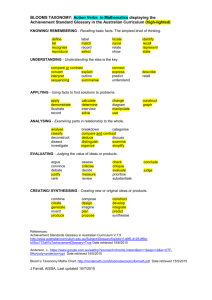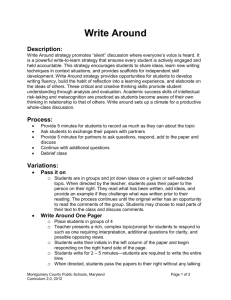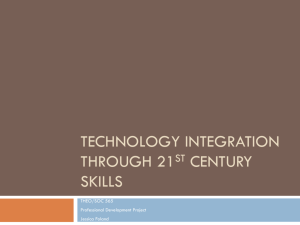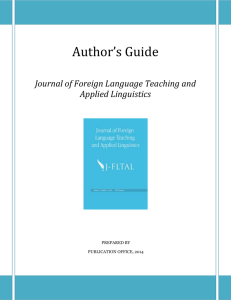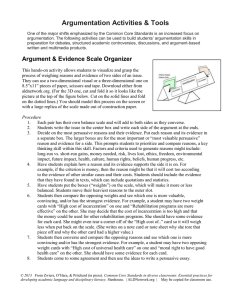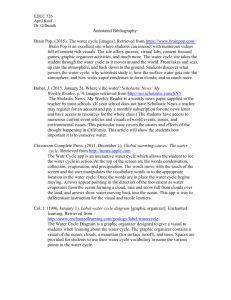Articles/Resources on Academic Language 8/23
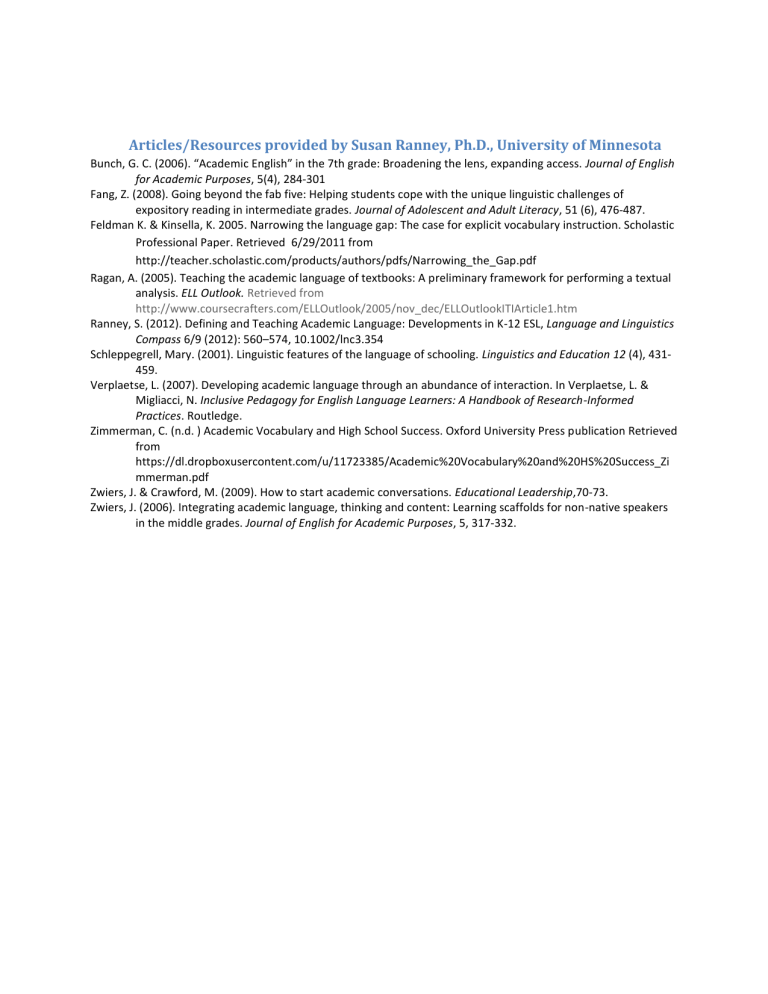
Articles/Resources provided by Susan Ranney, Ph.D., University of Minnesota
Bunch, G. C. (2006). “Academic English” in the 7th grade: Broadening the lens, expanding access. Journal of English
for Academic Purposes, 5(4), 284-301
Fang, Z. (2008). Going beyond the fab five: Helping students cope with the unique linguistic challenges of expository reading in intermediate grades. Journal of Adolescent and Adult Literacy, 51 (6), 476-487.
Feldman K. & Kinsella, K. 2005. Narrowing the language gap: The case for explicit vocabulary instruction. Scholastic
Professional Paper. Retrieved 6/29/2011 from http://teacher.scholastic.com/products/authors/pdfs/Narrowing_the_Gap.pdf
Ragan, A. (2005). Teaching the academic language of textbooks: A preliminary framework for performing a textual analysis. ELL Outlook. Retrieved from http://www.coursecrafters.com/ELLOutlook/2005/nov_dec/ELLOutlookITIArticle1.htm
Ranney, S. (2012). Defining and Teaching Academic Language: Developments in K-12 ESL, Language and Linguistics
Compass 6/9 (2012): 560–574, 10.1002/lnc3.354
Schleppegrell, Mary. (2001). Linguistic features of the language of schooling. Linguistics and Education 12 (4), 431-
459.
Verplaetse, L. (2007). Developing academic language through an abundance of interaction. In Verplaetse, L. &
Migliacci, N. Inclusive Pedagogy for English Language Learners: A Handbook of Research-Informed
Practices. Routledge.
Zimmerman, C. (n.d. ) Academic Vocabulary and High School Success. Oxford University Press publication Retrieved from https://dl.dropboxusercontent.com/u/11723385/Academic%20Vocabulary%20and%20HS%20Success_Zi mmerman.pdf
Zwiers, J. & Crawford, M. (2009). How to start academic conversations. Educational Leadership,70-73.
Zwiers, J. (2006). Integrating academic language, thinking and content: Learning scaffolds for non-native speakers in the middle grades. Journal of English for Academic Purposes, 5, 317-332.



